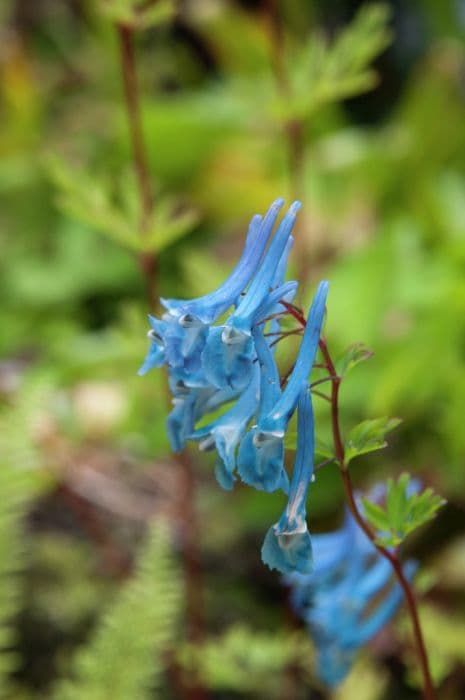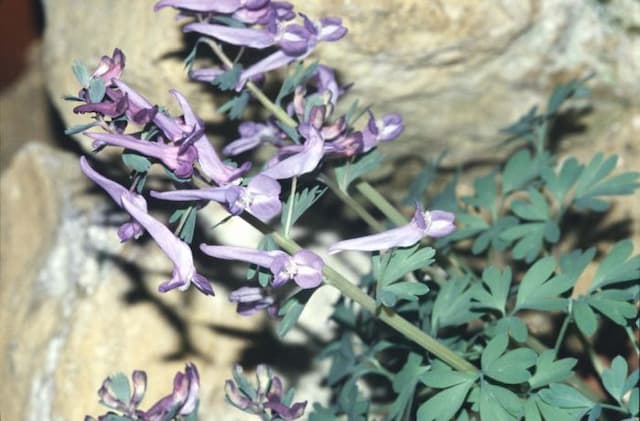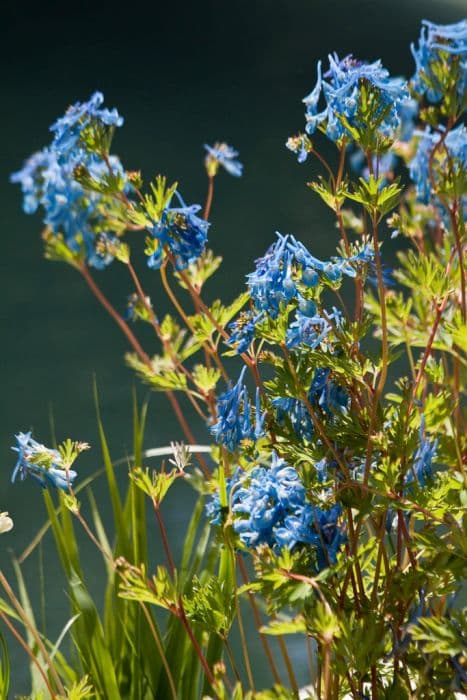California poppy 'Dali' Eschscholzia californica 'Dali'

ABOUT
'Dali' is a spreading annual to 25cm, with finely divided grey-green leaves and single, bright scarlet flowers to 7cm across
About this plant
 Names
NamesSynonyms
California Poppy, Golden Poppy, California Sunlight, Cup of Gold
Common names
Eschscholzia californica.
 Characteristics
CharacteristicsLife cycle
Perennials
Foliage type
Deciduous
Color of leaves
Blue-green
Flower color
Orange
Height
1 foot (30 cm)
Spread
1 foot (30 cm)
Plant type
Herb
Hardiness zones
6
Native area
California
Benefits
 General Benefits
General Benefits- Low Maintenance: California Poppy 'Dali' requires minimal care once established, making it an excellent choice for gardeners of all levels.
- Drought Tolerance: Being a drought-tolerant plant, it conserves water and thrives in dry conditions.
- Attractive to Pollinators: Bees and butterflies are drawn to the bright flowers, which helps support local ecosystems.
- Easy to Grow: It can be easily grown from seeds and adapts well to a variety of soil types.
- Long Blooming: California Poppy 'Dali' has a long flowering season, providing colorful blooms from spring to fall.
- Landscape Beautification: The vibrant colors of the blooms enhance the visual appeal of gardens and landscapes.
- Edibility: The petals are edible and can be used in salads to add a splash of color.
- Self-seeding: The plant self-seeds, ensuring a continual presence without the need for replanting each year.
- Ground Cover: Its spreading habit makes it a valuable ground cover, which can help reduce soil erosion and suppress weeds.
 Medical Properties
Medical Properties- Anxiolytic: California poppy has been traditionally used to help alleviate anxiety.
- Sedative: It is known for its mild sedative effects and has been used to promote relaxation and sleep.
- Analgesic: The plant contains compounds that are thought to have pain-relieving properties.
- Antispasmodic: California poppy may help reduce muscle spasms and is sometimes used for conditions like colic or spasmodic coughs.
 Air-purifying Qualities
Air-purifying QualitiesThis plant is not specifically known for air purifying qualities.
 Other Uses
Other Uses- California poppy petals can be used to add vibrant color to salads and dishes as an edible garnish, imparting a mild, slightly bitter flavor.
- The floral parts can be a natural dye for fabrics or paper, achieving shades of yellow to orange depending on the mordant used.
- California poppy seeds, while non-narcotic, can be used in baking as a garnish for breads and pastries, similar to poppy seeds from other poppy species.
- Dried California poppy plants can be incorporated into potpourri mixes for a subtle scent and splash of color.
- The golden blooms are used in the craft industry to create eco-friendly confetti for celebrations like weddings.
- The long-lasting flowers are sometimes used in pressed flower crafts, retaining their color well once dried and pressed.
- Gardeners use the California poppy as a companion plant to attract pollinators such as bees and butterflies to their gardens.
- The plant's extensive root system can help with soil stabilization and erosion control on slopes and banks.
- California poppy leaves can be used as a subtle, bitter addition to create a unique flavor profile in specialty teas.
- As a natural insect repellent, some gardeners plant California poppies near vegetable gardens to deter pests.
Interesting Facts
 Feng Shui
Feng ShuiThe California poppy is not used in Feng Shui practice.
 Zodiac Sign Compitability
Zodiac Sign CompitabilityThe California poppy is not used in astrology practice.
 Plant Symbolism
Plant Symbolism- California Poppy: Eschscholzia californica 'Dali'
- Beauty - The vibrant petals and distinct appearance of the California Poppy embody physical and natural beauty.
- Rest - As poppies are known for inducing sleep, they symbolize the need for rest and relaxation.
- Resilience - Able to thrive in poor soil conditions, the California Poppy represents the ability to endure and survive in hard conditions.
- Remembering the Fallen - While specifically associated with the red poppy, poppies overall have come to symbolize remembrance for soldiers who have died in war.
- California Poppy: Eschscholzia californica 'Dali'
 Water
WaterFor the California Poppy, water sparingly since it's drought-resistant and prefers a dry environment. You should water the plant deeply but infrequently, aiming for about 1 inch of water per week, which is roughly 0.5 gallons for an average-sized garden area. Allow the soil to dry out completely between waterings to prevent root rot. The best method is to use drip irrigation or water at the base of the plant to minimize moisture on the foliage and prevent fungal diseases.
 Light
LightThe California Poppy thrives in full sunlight with at least six hours of direct sun daily. It's crucial to place the plant in a spot where it can receive unfiltered sunlight for most of the day, as shade will significantly reduce flowering. The plant is adaptable, but optimal growth and blooming occur in a location with bright and consistent light.
 Temperature
TemperatureThe California Poppy prefers mild temperatures and can tolerate a range from about 40 to 85 degrees Fahrenheit. It is hardy in USDA zones 8 through 10 and can survive brief periods of frost. Ideal growth temperatures are between 60 and 70 degrees Fahrenheit, and excessive heat or prolonged cold can be detrimental to the plant.
 Pruning
PruningPruning California Poppy is not generally necessary, but deadheading spent flowers can promote further blooming throughout the season. If plants become leggy or untidy, they can be cut back by a third after the first flush of blooming to encourage a denser growth habit and a second bloom. Best time for this light pruning is midsummer, after the peak of the first bloom cycle.
 Cleaning
CleaningNot needed
 Soil
SoilCalifornia Poppy 'Dali' thrives in well-draining, fertile soil with a neutral to slightly alkaline pH, between 6.0 and 7.5. The ideal soil mix should incorporate loamy soil, sandy components for drainage, and organic matter like compost to provide nutrients.
 Repotting
RepottingCalifornia Poppies 'Dali' are not typically repotted as they are annuals and tend to resent transplantation. They grow best when directly sown into their permanent location, whether in a garden bed or a container.
 Humidity & Misting
Humidity & MistingCalifornia Poppy 'Dali' prefers a dry environment and is tolerant of low humidity, reflecting its native habitat. The ideal humidity level is low to moderate; high humidity may promote fungal diseases.
 Suitable locations
Suitable locationsIndoor
Provide full sun, sandy soil, minimal water.
Outdoor
Full sun, well-drained soil, sow directly.
Hardiness zone
6-10 USDA
 Life cycle
Life cycleThe life of Eschscholzia californica 'Dali', commonly known as California poppy 'Dali', starts with seed germination, typically occurring in early spring or when temperatures are suitable for growth. The seedlings emerge and develop into rosettes, forming a clump of finely divided blue-green foliage before the flowering stem elongates. By late spring or early summer, depending on climate and conditions, the plant produces its distinctive cup-shaped flowers that are a range of colors from cream and pale orange to yellow. After pollination, largely by bees, the plant develops elongated seed pods that mature and eventually split open to release numerous tiny seeds. These seeds may enter a dormant phase, which protects them through adverse conditions such as summer drought or cold winters, until favorable growth conditions return. The California poppy 'Dali' completes its life cycle by seeding itself, allowing new plants to grow the following season, and although it is a perennial, it is often treated as an annual or biennial depending on the climate.
 Propogation
PropogationPropogation time
Spring-Early Summer
Propogation: Eschscholzia californica 'Dali', commonly known as California poppy, is typically propagated by seed. The best time to sow California poppy seeds directly into the garden is in early spring, after the danger of frost has passed, or in autumn where winters are mild. Since California poppies do not transplant well due to their taproot system, it’s optimal to plant the seeds where they are to grow. To sow, scatter the seeds lightly on prepared soil that ensures good drainage and press them gently into the soil surface, as they need light to germinate. Keep the soil moist until germination, which usually occurs within 14 to 21 days. Thinning the seedlings to about 6 to 12 inches apart (15 to 30 centimeters) will provide enough space for the mature plants. This straight-forward method of propagation is favored due to its simplicity and effectiveness.









